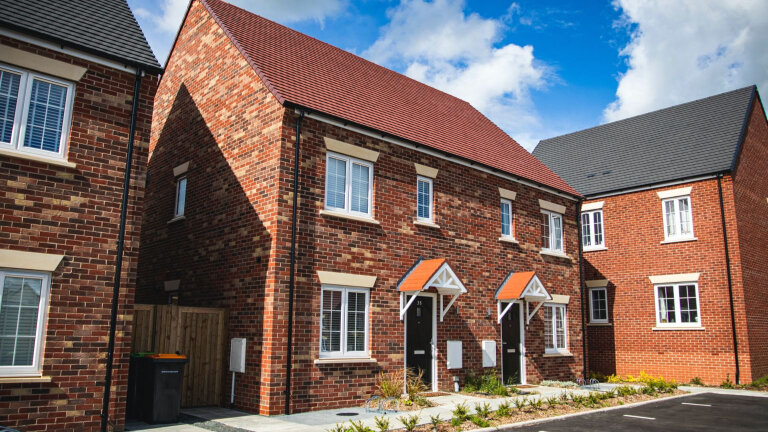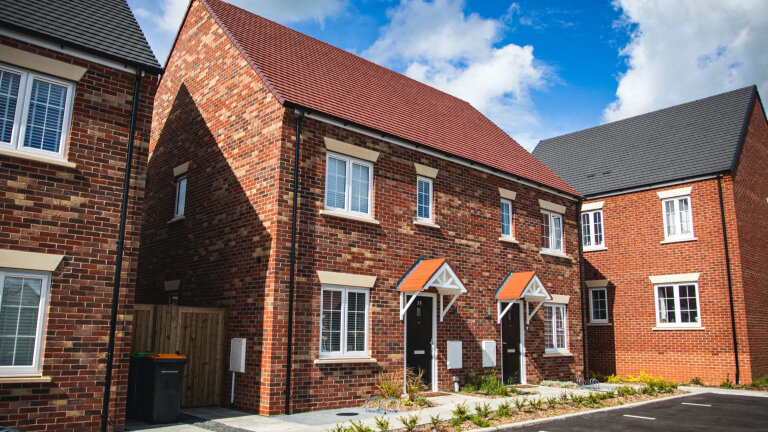
Residential Bridging Loan FAQs
In this article, we'll delve into residential bridging loans, their significance, costs, advantages, and provide a comprehensive guide on all you’d need to know.
Are you in need of financing for purchasing or developing a residential property? Don't let the lengthy process hinder your progress or miss out on great opportunities. At Bridging Loans Direct, we specialise in residential bridging loans and are here to help you access the best bridging loan for your specific needs.
With our residential bridging finance services, you can benefit from:
- Property bridging loans available from £50,000 to £25m
- Monthly interest rates starting from 0.5% pm, the lowest in the market
- Lower rates for loans over £750,000, starting from 0.27% pm
- £99 automated valuation option for properties valued up to £1 million
- Flexible loan terms of up to 36 months
- Loan-to-Value (LTV) ratios up to 80% (up to 100% funding in some cases with additional assets)
- Option for interest roll-up
- Rebridge loan options available
- Bridging finance for residential properties, including downsizing, upsizing, UK and foreign property purchases.
- Bridge loans to solve chain breaking, auction property, refurbishment loans.
Don't let financing challenges hold you back. Take action today, get in touch with our team at Bridging Loans Direct to discuss your residential bridging finance requirements.
Call us now at 0800 368 9344 to discuss your residential bridge loan and Seize the opportunity to secure the funds you need.
What is a Residential Bridging Loan?
A residential bridging loan - also referred to as a regulated bridging loan - is a type of short-term financing option used to bridge the gap between the purchase of a new property and the sale of an existing one.
These types of loans provide borrowers with temporary funds to facilitate smooth property transactions, especially when there is a timing misalignment between buying a new house and selling your current one.
Residential bridging loans are typically secured against the property being sold or the one being purchased. Borrowers can access the necessary funds quickly through a fast bridging loan, enabling them to secure a new property before selling their existing one.
Once the sale of the current property is completed, the proceeds are used to then repay the bridging loan.
You can discover more on our page what is a bridge loan
Residential Bridge Loan: the Process and Key Steps
The process is simple – especially when you seek the assistance of an expert bridging loan broker. At Bridging Loans Direct, we can help you through all stages of the loan application, and deal with lenders directly on your behalf. Obtaining and repaying a residential bridging loan involves these key steps:
Application
You’ll make the initial application providing property details, loan amount, and timeline.
Valuation
Lender assesses property value for loan-to-value ratio (LTV) and maximum loan amount.
Loan Terms
The lender provides loan terms, including amount, interest rate, repayment period, and fees. The borrower engages solicitors or conveyancers to handle the legal aspects of the loan. The lender may also require a legal charge on the property as security for the loan.
Loan Approval and Disbursement
If terms are accepted, the lender approves and disburses funds quickly. The funds are typically released in stages – loan drawdown – or as a lump sum, depending on the agreed terms.
Repayment
You can make monthly interest payments and repays principal amount through property sale or other means. Some loans require monthly interest payments, while others allow the interest to be rolled up and repaid along with the principal loan amount at the end of the term. If the borrower sells the property before the loan term ends, they can repay the loan earlier than anticipated. Some lenders may charge an early repayment fee, so it's essential to review the loan terms beforehand.
Exit Strategy
The Borrower outlines repayment plan to demonstrate ability to repay and mitigate risks. The borrower must demonstrate a viable plan for repaying the loan, such as through the sale of the property or refinancing with a long-term mortgage.
Refinancing or Extending
If the borrower needs more time to repay the loan, they may explore refinancing options or extending the term with the lender. This allows for greater flexibility in managing the financial aspects of the property transaction.
You can take a look at our bridging loan example for more details, and to better understand the process
Why Apply for a Residential Bridging Loan?
Residential bridging loans are an accessible alternative to financing residential property – allowing borrowers to avoid the lengthy process of a taking out a mortgage, or when a property is unmortgageable.
Bridge loans offer several advantages that make them attractive for borrowers – here’s a few examples of the benefits:
- Flexibility: Bridging loans offer flexibility in terms of the loan amount and repayment structure, allowing borrowers to tailor the loan to their specific needs and circumstances.
- Speed: These loans are designed to be obtained quickly, providing borrowers with immediate access to funds, which can be beneficial in time-sensitive situations.
- Cash Buyer: By securing bridging finance, borrows can become cash buyers, increasing their attractiveness to property sellers. This provides them with a 12-month window to sell their existing property, relieving the stress of potential buyers withdrawing their offers.
- Opportunity Seizing: Residential bridging loans allow borrowers to seize favourable opportunities, such as securing a new property quickly or participating in auctions, even if their funds are tied up in their existing property.
- Property Chain Breaking: Bridging loans can help break property chains, enabling borrowers to proceed with a purchase even if the sale of their current property is delayed or falls through.
Here's a helpful guide on How to Fix a Broken Property Chain With a Bridging Loan
What Risks are involved with a Residential Bridging Loan?
While bridging loans are a common and popular method of financing property, all types of loans come with their own inherit risks.
Firstly, these loans typically have higher interest rates compared to traditional mortgages due to their short-term nature. Borrowers should carefully assess the cost of borrowing and develop a realistic plan for repaying the loan.
One significant aspect to consider is the timing and potential risks associated with selling the property. Uncertainties or delays in the sale process can create financial strain, so it's crucial to establish a feasible timeline and have contingency plans in place.
Financial stability is another vital consideration. Borrowers should evaluate their financial situation and ability to handle any unforeseen circumstances during the loan term. It's essential to account for unexpected costs, market fluctuations, and other factors that could impact loan repayment.
Seeking professional advice from a knowledgeable financial advisor or mortgage broker experienced in bridging loans can be invaluable. They can provide guidance on finding reputable lenders, understanding loan terms, and managing associated risks.
By carefully considering these aspects and understanding the intricacies of residential bridging loans, borrowers can make informed decisions and effectively utilise this financing option to facilitate their property transactions.
What Property Types can a Residential Bridge Loan be used for?
Residential bridging loans are designed to be flexible and cater to a range of property-related needs. Here are the property types that qualify for residential bridging loans:
- Houses: Detached, semi-detached, terraced, or townhouses.
- Apartments and Flats: Including leasehold properties.
- Bungalows: Single-story properties.
- Maisonettes: Self-contained units within a larger building.
- New Builds: Recently constructed residential properties.
Bridge loans, for these types of properties, can also be used for renovations and refurbishments. Individuals can purchase properties in need of repair or improvement through the funds received via a residential bridge loan.
These loans also facilitate the conversion of non-residential buildings into residential properties.
Properties for commercial use purposes are not regulated under the same terms. Commercial property would require a commercial bridging loan.

In this case study, we tailored a short-term finance solution, empowering an elderly client to fulfil their retirement dreams in Somerset. Explore how bridging loans bridged the gap between properties, making downsizing a smooth and attainable transition.
Bridging Loans Direct | Short Term Finance for customers looking to retire to Somerset - Read More »
Bridge Loans for Residential Auction Properties
Another valuable application of residential bridging loans is for auction properties. Buyers can secure properties acquired at property auctions quickly, before arranging long-term funding. This feature is particularly beneficial in time-sensitive situations where traditional mortgage processes may take longer, or be impossible.
It's important to note that each lender may have specific criteria and eligibility requirements for the properties they consider for bridging loans. Working with an experienced broker can help ensure you find the right loan for your specific property type.
"Property auctions can be thrilling, but the need for immediate funds can catch many off guard. At Bridging Loans Direct, we're here to help you turn opportunity into reality. As Head of Bridging, I've seen how our tailored bridge loan solutions empower buyers at auctions. With our expertise, you can confidently bid and secure that dream property without the delays of traditional financing. Our team understands the urgency and dynamics of auctions – we're your partner in making swift and informed decisions. Let's bridge the gap between ambition and acquisition, ensuring you're always one step ahead in the property market."
- Fergus Allen, Head of Bridging
Cost of Residential Bridging Loans
Residential bridging loans come with various costs that borrowers should carefully consider. These costs include
Interest Rates
Bridging loan rates are typically higher than those for traditional mortgages due to the short-term nature of the financing.
Monthly interest rates can range from 0.5% to 2%, depending on factors such as the loan-to-value ratio, the borrower's creditworthiness, and the property type.
Higher loan amounts or riskier properties may attract higher interest rates.
Fees and Charges
- Arrangement Fees: Charged by the lender for setting up the loan.
- Exit Fees: Applicable when repaying the loan early.
- Valuation Fees: The cost of property valuation to assess its worth.
- Legal Fees: Solicitor or conveyancer fees for handling the legal aspects of the loan.
Other Costs
- Brokerage Fees: We typically charge up to 2% of the loan amount.
- Insurance: Building and contents insurance may be required.
- Administration Fees: Additional charges for managing the loan.
It's crucial for borrowers to consider bridging loan costs, including both interest and fees, to determine its affordability and compare different loan options. You can use a bridge loan calculator to get an initial quote and idea on the cost of a residential bridging loan.
Usage Scenarios for a Residential Bridge Loan
One common scenario is using a bridging loan as a second charge on a property with an existing mortgage. This allows borrowers to access additional funds without affecting their primary mortgage.
Moreover, downsizing or upsizing to a new residential property is made easier with a bridging loan. Borrowers can raise more funds than the purchase value, using the surplus to cover moving costs, refurbishments, or other expenses related to the transition.
Short-term lease finance is another application for residential bridging loans. It provides individuals with the necessary funds for temporary lease agreements, allowing flexibility in housing arrangements.
Whether it's acquiring a property as a UK expat, securing a second charge loan, purchasing a new home before selling the current one - these are all just a few of the examples of the usage scenarios for bridging loans.
The flexibility and speed of bridging finance make it suitable for various property-related transactions and short-term funding needs.
If you have specific requirements or questions about a particular scenario, you can contact us about your residential bridging loan case. We’ll help you get to the right UK lender.

Property chain breaks can be a disruptive issue that plagues homebuyers frequently. In this case study, discover how our tailored bridging solution swiftly resolved a chain break, enabling seamless property acquisition amidst rural charm and unique challenges
Looking for a Residential Bridging Loan?
If you're seeking a bridge loan for a residential property, our team is here to assist you. We have access to a wide range of specialist lenders in the short-term market, including options that may not be readily available through traditional channels.
Whether you're a property buyer, investor, or new to the market, we can provide a prompt decision in principle tailored to your specific residential bridge loan requirements.
With our expertise and extensive knowledge, we'll connect you with a suitable lender offering favourable rates that meet your needs.
Our goal is to ensure you secure the financing you need for your residential property venture, regardless of your level of experience. Let us assist you in finding the right solution.
Contact us today to explore your options and obtain a decision in principle. Get in touch now to take the first step towards obtaining your residential bridging loan.
FAQs
Are residential bridging loans available for self-employed individuals?
Yes, residential bridging loans are available for self-employed individuals. Lenders consider various factors such as income, credit history, and property value to assess eligibility for the loan.
What are the alternatives to residential bridging loans for short-term financing?
Alternative options for short-term financing include personal loans, credit cards, or borrowing against other assets. However, these alternatives may have higher interest rates or different requirements compared to residential bridging loans.
What happens if the sale of my existing property falls through after I secure a bridging loan?
If the sale of your existing property falls through after securing a bridging loan, you will still be responsible for repaying the loan. It's important to have a contingency plan or backup options in case such a situation arises.
Can I get a residential bridging loan with bad credit?
It may be possible to obtain a residential bridging loan with bad credit, but it can be more challenging. Lenders may consider other factors such as the property's value and the borrower's ability to repay the loan. Higher interest rates or stricter terms may apply in such cases.
















